Feature Photo: the Drawing Room with German cabinet and Calico wallpapers
©Ed Reeve / Courtesy of Mallett Antiques
Article by Roxana Florina Popa
A dancing versatility between resplendent antiques and 21st century design at Mallett on the elegant Georgian-style Dover Street in London.
The preferred antiques dealer to Her Majesty, Queen Mary, marked its 150 years of existence by becoming the “Design House” and hosting the London Design Festival in September 2015.
Mallett Antiques and international brands of excellence – TANE Joyería, Pomellato and Calico – were for one week mutual spectacular reflectors. Harmoniously exchanging mirror lights, they enhanced both craftsmanship and contemporaneity in each other.
An unprecedented perspective, where Mallett intensified the fires of finely polished silverware, colour purity in high-end jewellery and golden wallpapers through the splendid and noble setting of the Ely House and received their abundantly innovative flair.
Mallett itself embraced the remarkable metamorphosis of becoming a “modern design house” in 2008. It defined a new standard of contemporary design and started creating its own contemporary design collection, Meta.
Lighting installation in contemporary design by Bocci in the Dining Room of Ely House
Courtesy of Mallett Antiques
The driving forces to the future are explained by Giles Hutchinson Smith, Managing Director at Mallett: “Over the last several years, we have noticed clients increasingly seeking our advice on where they might find contemporary furniture and objects of equal quality to their existing Mallett antiques pieces”.
The Meta Collection celebrates the fusion between 18th century superlative techniques and execution and 21st century aesthetics. It gathers on its fertile ground the best designers and the finest manufacturing workshops, all supported by a comprehensive research in the history of design and materials for decorative arts.
Mallett Antiques at Ely House, the Bishop’s Palace, in London
Courtesy of Mallett Antiques
The Meta collection is exhibited not only at Mallett’s showrooms in London and New York, but also at renowned fairs like Masterpiece, TEFAF, the San Francisco Fall Antiques Show and the Palm Beach Show.
In the beautiful, gold shimmering Drawing Room of the Ely House, Eleonore Halluitte-Andrews, the Head of Contemporary Design and the curator of the Design House, talked about the dynamics of Mallett’s transformation and offered her guidance on decorating rooms with antiques and contemporary pieces.
Eleonore Halluitte-Andrews / Courtesy of Mallett Antiques
Roxana-Florina Popa: Mallett Antiques is now on a “metamorphosis” journey. How do you experience the House operating at two poles: the antiques and the restoration work on the one hand and the contemporary design on the other hand?
Eleonore Halluite-Andrews: Moving towards 21st century design comes from our clients because they already owned fantastic antiques collections from us and now they are looking for add-on collections. When you start adding, rather than building a full collection, you become much more aware of the pieces you are buying.
They are still buying nice pieces of antiques, but every so often they like to break with tradition and bring something absolutely contemporary to their environments.
In contemporary design, buying 20th century and mixing it with the 18th century is quite difficult. They have such a strong identity in terms of aesthetics. It takes a lot of good eye and extra confidence.
Our clients felt much more comfortable with something extremely contemporary.
“Ammonite”, Designers: Noe Duchaufou & Laurence, Ateliers: Marzorati Ronchetti
Courtesy of Mallett Antiques
They said they could go to galleries and fairs and find all sorts of modern products in plastic or wood, but worked by machines in large series. They needed something with the quality of their antiques and they just felt that nice plastic armchair would not really work. “Could you help us source beautiful, contemporary pieces?” The truth: it is really, really hard. Mainly, because it is all made now. It is not a huge offering. It takes a lot of investment and knowledge to deliver something like that.
So, we thought “if we cannot find it, we’ll just have to make it”, not quite realizing what it meant. What did we think? We have embarked on this phenomenal project. That’s the real genesis. From “if we cannot find it, we’ll just have to make it” to doing it, it is a long way. We are completely uneducated in design. We worked with consultants who took us to Milano and we met a lot of designers. There we realised the wealth of designers like Tord Boontje who is inspired by nature and Matali Crasset who is so much about geometry, Klauser & Carpenters for sculptures, but also industrial designers. Every piece has a real flair. It is just the most wonderful journey, but it is very slow and patience demanding.
In the Meta Collection, we look for three core qualities: great design, great materials and great craftsmanship. You can find this great combination in antiques and also in contemporary pieces. When we partner for events like the London Design Festival, these are the qualities we look for.
The great German cabinet you have behind you gives so much presence that it becomes an art work almost. Our clients buy great furniture like they would be buying a great painting. They become great collectors. The same way they would buy a great antique piece, they would be buying a contemporary piece from us. They are very selective. You no longer have to do your Louis XV boudoir. You can choose your pieces in a very particular way. They have to pass the test of time, let you enjoy further the beauty of the subtle joints, opening and shutting the doors of your cabinet like with a Rolls Royce. It is so luxurious and it is all about the experience of living with it.
Every generation buys and collects in different ways. Mallett opened in 1865 when people were collecting all great pieces from the 17th and 18th centuries. Suddenly, tapestries started being looked for and one of our directors was extremely knowledgeable and wrote many books about it. Then people collected antique glass and we had a glass department for many years. We follow what our clients are collecting and they rely on our knowledge and we will give them the best. We also like to invite people to work with us because you cannot do it on your own. All these things need an invariable number of talented people. This is why clients come to us: they know they are going to find a pool of talent and effort on which they can rely. And when they come home with their acquired piece, they know it is going to be perfect. They know that every day they are going to walk home, they are going to fall in love with what they have.
RFP: What does Mallett Antiques intend to reflect in the Meta Collection?
EHA: With the Meta Collection, we wanted to reflect the ethos of Mallett.
We have pieces from the 18th century and 19th century from different countries: France, Germany and England, of course, because this is our core knowledge. We want to do collections that can embrace diversity, as well. We want to teach people to stand on their own rather than having a collection furnishing entire rooms and designed by the same person. There are add-on pieces by different designers.
We choose designers who have their own identity. We talked about Barber & Osgerby. The pieces we have done with them translate a city scape into a traditional surtout-de-table. Surtout-de-tables are silver trays with candlesticks bringing beautiful lights on the dining table in the 18th century. We wanted to revisit that piece with them due to their approach to architecture and contemporary design. The piece is in New York now. It is the most wonderful piece in Britannia silver, which is a bit stronger than sterling silver. We always use a pure grade of silver and a beautiful polished surface. We did one version in Britannia and one in vermeil dipped in gold. We always try to find the finest materials and the finest craftsmen.
Surtout-de-table “Cidade“, Designers: Edward Barber & Jay Osgerby
Courtesy of Mallett Antiques
Antiques no longer resonate to people as they used to and you have different readings of different periods. Some people relate to the late 19th century because they remember their grand-parents having a lovely piece in their drawing room. This brings a sense of romance and history that they want to keep. Others would want something fresh to break from this piece. They might eventually come back to it later. You also progress with age, taste, while you move and people move all the time. Architecture changes, too.
Some people are passionate about antiques and we welcome them, we like to help them. Here we are surrounded by German, Italian, English pieces. We are sitting on lovely armchairs made in England based on French style. We bring them to life and we inform people about their fascinating history. We also want every piece to be functional so that people enjoy the piece as long as they like, beyond who the maker was. Why we go back to craftsmanship and really good materials? So that these pieces can translate to time and be restored when they are passed from a generation to another. It is part of loving a piece.
RFP: How does the dialogue of an antiques dealer with contemporary designers make the Meta Collection emerge? Does Mallett Antiques validate the design? Do you review materials? To what extent is Mallett Antiques involved in the design process?
RFP: Very much. If you look at the triangle of the process, you have the designers, the makers and the material and in the heart of it is Mallett. Everything connects to Mallett.
We start with the designer whose style and identity we love. For example, Matali Crasset. She is all about asymmetric shapes; her palette of colours is more acid than the subdued colours in contemporary design. We look at a piece we have in the collection and we think of designing something more unusual. Perhaps a cheval mirror which was a very popular style of design in the 19th century. We agree on the project and on the piece of furniture we will be making together. Then, we give them carte blanche and we let them come with as many designs as they want. Together we try to find the right design that has never been seen before. We do not try to copy and we do not want to make our own edition of what is popular. We really want to bring a new fresh design.
We revisit antiques, but with a very contemporary approach. We know our clients and we appreciate what they would like and understand. We inform the designer, if there is a piece of lighting, about the practicality of the lighting because we know the environment our clients live in and we fit this into the design.
There is also the aesthetics part and we push the designers to achieve a high level of design. When we talk about antiques, there is a lot about style: le style Louis XV, le style Louis XVI, because the fabrics, the carpets, the furniture, everything was created to be presented together. There is a sense of unity that we try to give to our pieces.
When one starts designing a piece, it could be that a part of the piece has a certain language and the other part has a different language. We help the designer find the right language and have a consistent piece throughout. We really want the designer to rise to the standard. It is an open conversation. It is not judgmental, it is not critical, it is really informing. We show them pieces. Regarding this chair leg: we look at how it was designed, how it flows from the top, how it is curved.
We try to give them an education in antiques since a lot of people forget that antiques in that time were very contemporary, very edgy. They develop radically different from older pieces and you see the evolution in styles. Very few designers have the chance to study their history and when they come here, it is almost like a playground.
The next step, once we finalised the design, is to think what the best material will be. We never think of the material first. We want to find the best material for that respective design. We do it the hard way, but the purest way. When we did Carina with Klauser & Carpenter, their dining table was 3 meters long and extremely sculptured because it was based on maritime architecture. It was very physical, much more than other pieces. We thought sculptural comes from sculpture. Sculpture means marble. It has to be in marble. It could not have been in any other material. Also, when you think of the great sculptures, they are all in Carrara marble. So, off I went to Italy and tried to source blocks of marble. Of course, it had to be a piece of marble perfect in its colour, in its vein, but also in its structure.
“Carina“, Designer: Klauser & Carpenter, Ateliers: Kienesberger Stein
Courtesy of Mallett Antiques
Obviously, we do not have that knowledge; we have the eyes, but for the structural size, this is where we bring the maker. Not everybody can make every piece we have. We have to find the right maker who has the right understanding. We found the most wonderful maker, Kienesberger Stein, in Austria for this piece. Not only is he a third-generation stonemason and trained some of the best skilled youngsters. They all won prizes for world skills competitions. They work together with a company called Breton which manufactures cutting-stone machines. Their beautiful alliance of the knowledge of the past – how to do works in a very traditional way – and also this monster machines enable them to produce pieces that you could only have dreamt of in the 18th century.
We do not want to pull away from the advances in the craft. If Michelangelo had an electrical scissor, he would be happy doing David instead of working on each block of marble.
This maker travels with me. I look at the block from an aesthetic and design point of view and he looks at it from the making, technical point of view. We sent the material to Austria where Norbert made the table. The maker has also to understand the piece and translate the design. It is really a collaborative process. It is almost like a waltz, a three-step dance with all partners working tightly together. If one of them did not understand the project, the piece would suffer.
There are little miracles in themselves. This is why we do not limit our editions because when it is the next time we are going to find a block of marble that is going to be 3 meters long with the perfect colour and the perfect structure? They are incredibly rare. Can we find other blocks for two or three tables? It is not guaranteed.
We highly encourage our clients when they see a piece that they really like, not to hesitate and to actually seize the moment because the other constrict we have are the makers. Some of them are not in their 20s and they have invaluable knowledge. Their hands are jewels. They should ensure their hands just as some celebrities ensure their legs. It is all there, it is about feeling the curve, the tension and the manner of translating it into the piece. They are irreplaceable when they retire. You cannot take somebody else from the workshop.
That person made that piece and made it what it is. It cannot be reproduced; it has a soul and world of its own. They are more accent pieces then something that furnishes the whole room. Your dining table in marble will very much take central stage, but it will be a functional piece.
There are pieces we make bespoke for clients, from scratch because this is another joy, as well. We transmit to the designer and the maker the client’s wishes and if it is technically possible, we will deliver that. It is a highly bespoke process.
The Meta Collection projects need 1 to 2 years to come to fruition. The sensible way of editing design is to start with the factory or a workshop and invite the designer and ask him “this is what we make traditionally. Can you design a new piece to redevelop our skills?” Also, offer a product that is fresher than the previous design.
We start with nothing. We start just with the will to commission someone great. Suddenly, we have a very steep mountain to climb. No matter how many designers you meet, no matter how many materials you work with, every project commands its perfect maker, its perfect designer, its perfect material. We work, for example, with different cabinet makers like Arabesques in France, mainly because of the French heritage. A lot of French pieces in the 18th century were all about very generous curves. They have the understanding of curves and counter-curves. So, we could not have given that to a maker here in England because a cabinet maker here is more about strict lines.
“Armoir”, Designer: Tord Boontje
Courtesy of Mallett Antiques
The same goes for a desk in solid wood in late 19th century technique where the heritage in France is not the right heritage. We worked with a workshop called “The Edward Barnsley Workshop” .They are the true craftsmen for that piece and a beautiful level of finish. They produce their own design and we absolutely had to beg for them to make our desk. They accepted because they recognized the quality of the design and the honesty of the intention behind it. We did not want to work with them for their name. We wanted their knowledge to be infused into that piece. So, it is a true partnership between people. But, it is a roller coaster, because you find a person who proves not to be the right person and then you find the right person who says they cannot do it. It is a very emotional process. Once you get it, it is absolutely wonderful.
RFP: What is at the core of the “new standard for contemporary design” defined by Mallett Antiques?
EHA: 2008 with the world falling into pieces opened the return to core qualities. Where some designers expressed everything they wanted in all kinds of materials, I think the clients have become very selective and very demanding. They are not only looking at creativity, they also want something that will stand the test of time. The only way to do that is through quality. Designers and houses like us were pushed to be more demanding with ourselves and the pieces we produce.
Years ago when we started, in the whole notion of design there was very much happening and a lot of people asked “is it design art?”, “is it functional?”, “is it a collector’s piece”? For us, they are antiques. This table where we are sitting, it is a collector’s piece, but initially, it was intended just as a dining table or a guéridon. We intend our pieces to be pieces of furniture and hope that the pedigree and the knowledge we give to those pieces will make them collectable. It is quite ambitious. It is a new offering.
“Cidade” contemporary surtout-de-table on an exceptional antiques table in Ely House
Courtesy of Mallett Antiques
We do not design with a particular designer in mind. We are commissioning a designer because we truly believe in him or her. This is why we put everything we know and everything we can bring to help the designer create a stunning piece as part of his body of work. We can only hope clients will follow. There are pieces we produce on and on and on. Matali Crasset’s lantern is one of our top sellers. We did large and small versions, so some pieces really take a life of their own.
Matali Crasset, “Diamonds are Girls’ Best Friend”
Courtesy of Mallett Antiques
If we look at today’s collaboration with Calico Wallpapers, they had to really create something that is bespoken. They explored a whole effect on six panels that follow each other. This in itself is more demanding than repeating exactly the same pattern over and over. Clients want that extra mile. You see young brands like Calico making this to perfection. They use traditional techniques like Ebru, the Turkish technique of marbling paper, to obtain the pattern, but then they scan it to a very, very fine degree and expand it on the computer. They also looked at the colours to create a much bespoke product. It is through that level of excellence that designers now have to reach to new, interesting products, but also through relevance and value. The client might value something different from what we value.
RFP: What would be an interesting mixture of antiques and contemporary design pieces in the same room?
EHA: I think it is not so much about the pieces, but about their levels. At Mallett, we have different levels of antiques. Not every piece in the museums is 500,000 ₤. There are antiques at 1,000 ₤. Something that was made at 1,000₤ will most probably fit with something also at 1,000₤ because they have the same DNA. When pieces are at the same level of excellence or quality or have the same heritage, they blend very spontaneously.
Last year we had a collaboration with Bocci that do fantastic lighting in blown glass. We created a chandelier for the stairwell here. People said glass was not going to work: it was too contemporary and not fitting the architecture of the building. Actually, it is blown glass, it is traditional, it has all been developed and created in the workshop. The colours used are the same with the colours chosen when the architecture of this building was put together. The installation and the contrast worked because both have the same heritage. We now have a new reading of those installations.
Chandelier by Bocci above the Grand Staircase of the Ely House
Courtesy of Mallett Antiques
With furniture, it is exactly the same. With coffee tables it is ragingly contemporary when it is made out of a solid wrinkled block of steel. If you have wonderful 19th century plush sofas with beautiful silks because they are at the same level of demand, they can dialogue in the materials.
Nothing prevents to mix a big antique with a piece from IKEA, but that is a lot harder to create something beautiful. Well, we are very demanding, but that’s just us.
You have to find your own style, as well. Some people have incredible flair and can mix everything. For some people, it might not come naturally, so the best guideline to be comfortable with your choice is to follow the same piece level, no matter the creation period of time and origin.
It can be terrifying. It is like building a collection from various galleries and retailers. It is like saying we want to buy 20th century pictures. What are you going to buy: Impressionists or Bacon? You start falling in love with things, as well.
“Fig Leaf”, Designer Tord Boontje
Courtesy of Mallett Antiques
RFP: Which is the antique piece and the contemporary design piece that each home should have?
EHA: The antique piece would be a great pair of armchairs. You get incredible design with chairs and armchairs. It is something comfortable that you want to keep and enjoy further in your drawing room. You’ll have great carpentry over which you can pass your hand. It is very tactile and pleasant. You can reupholster them as in fashion and you can apply contemporary prints. You can reinvent them, make them your own, and enjoy their quality.
As for the contemporary design piece, this is the coffee-table because it did not exist as an antique. It was invented in the 20th century. Coffee tables have different shapes and forms and you can be very creative with them. They have a great personality as those cut in hard lines in steel. You are sitting down, you keep looking at it, use and touch reaching for your cup of coffee or put your feet on it. Compared to sofas requiring a lot of time, comfort and a big investment, coffee tables allow more flexibility and you can really bring your personality in a much direct way, if you love colour, for instance. I admire people who design coffee tables because it is difficult to bring something exciting.
Special Thanks go to Mallett Antiques
More on the international brands partnering with Mallett Antiques at the London Design Festival
This article has been selected into the book “Beauty Elegance Creativity – 12 Interviews on the Act of Creation” published by Roxana Florina Popa
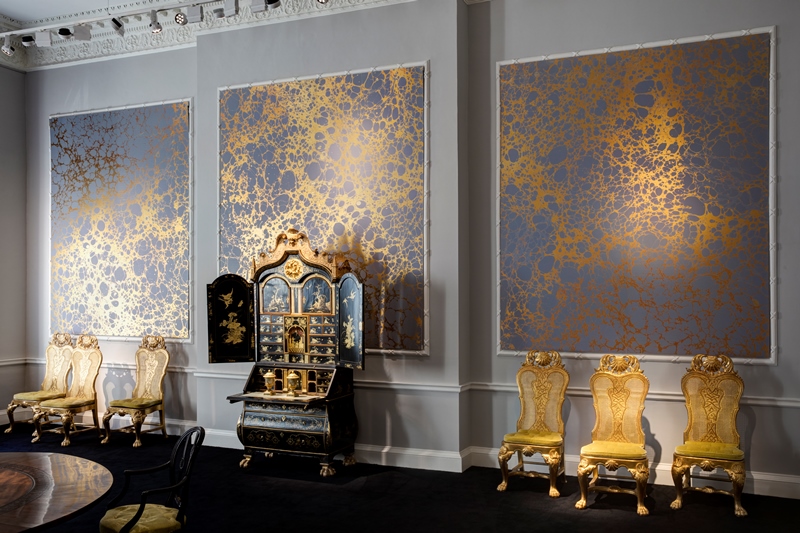

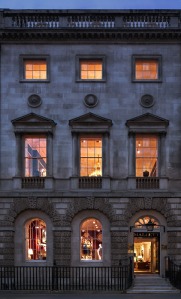


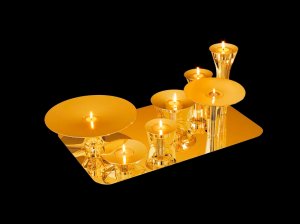


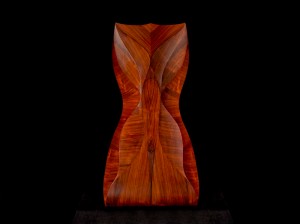

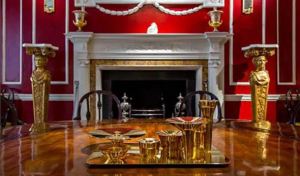





Very well written, congratulations! I have never thought that a pair of armchairs could be the one little antique thing changing everything in a home’s atmosphere…. But she’s clearly right!
LikeLiked by 1 person
Thank you so much! Indeed, during the conversation with Eleonore Halluitte-Andrews , I immediately realised that the most decorative and functional piece I first wanted to buy for my house as something to always return to during the day was a beautiful, well-shaped armchair.
LikeLike